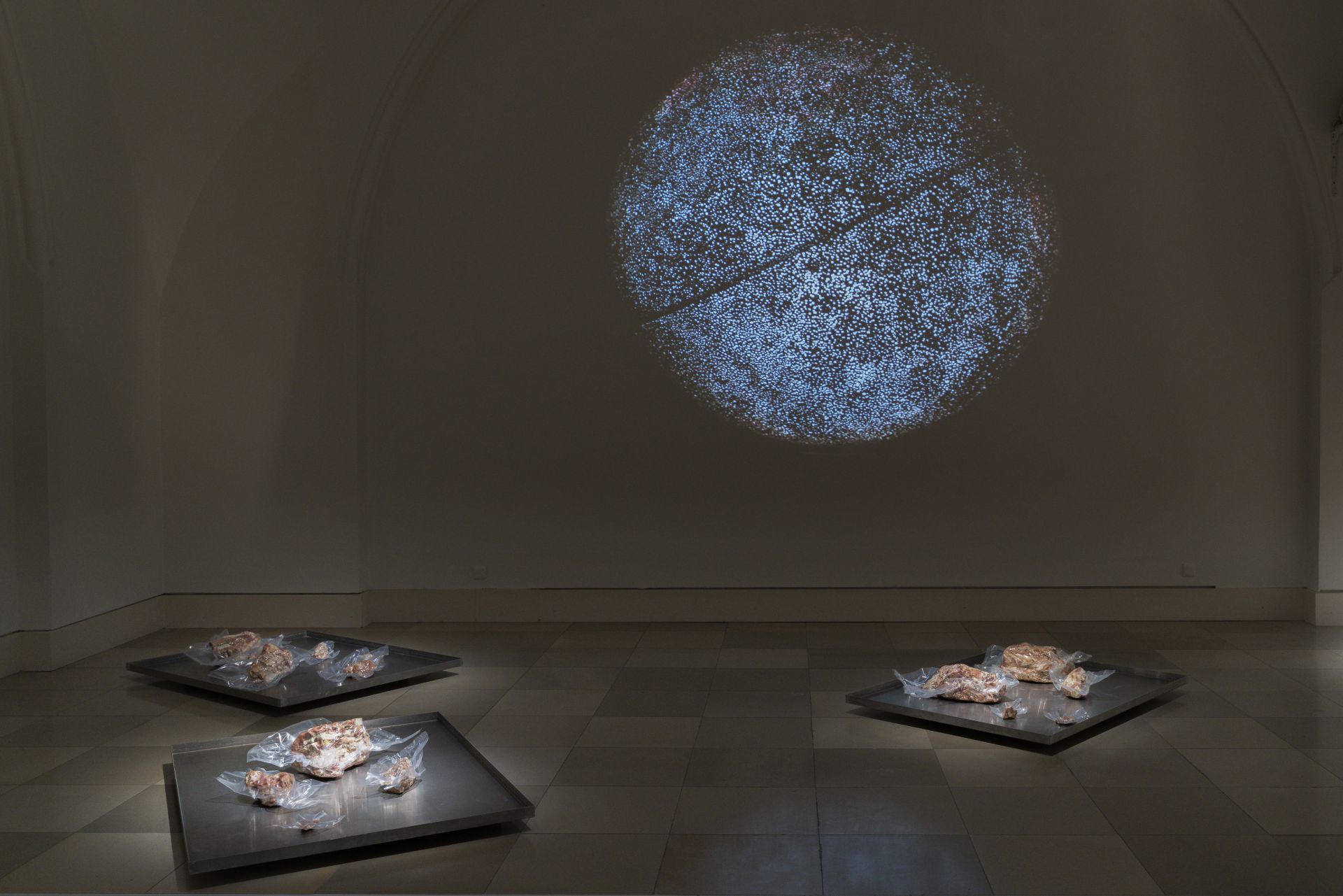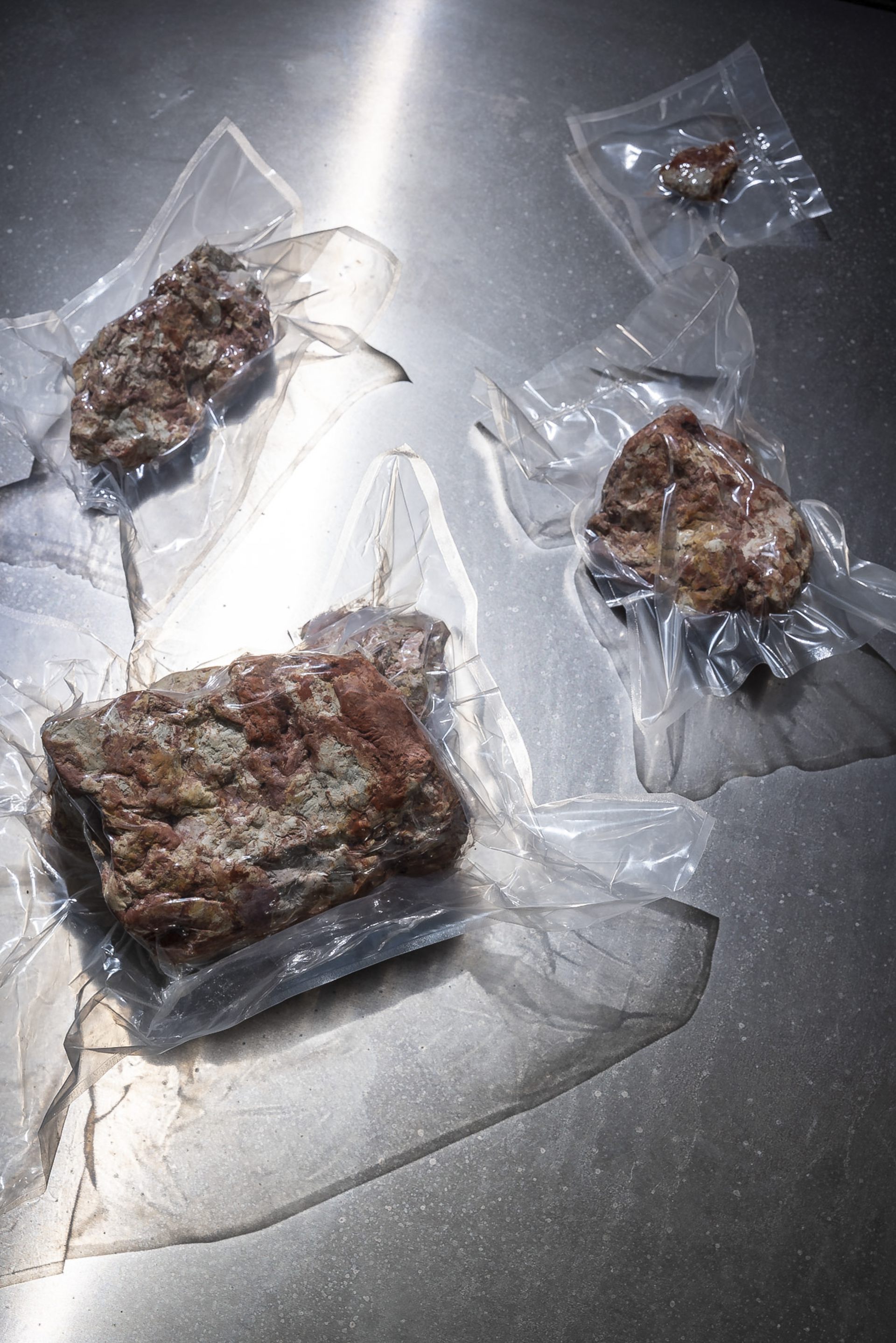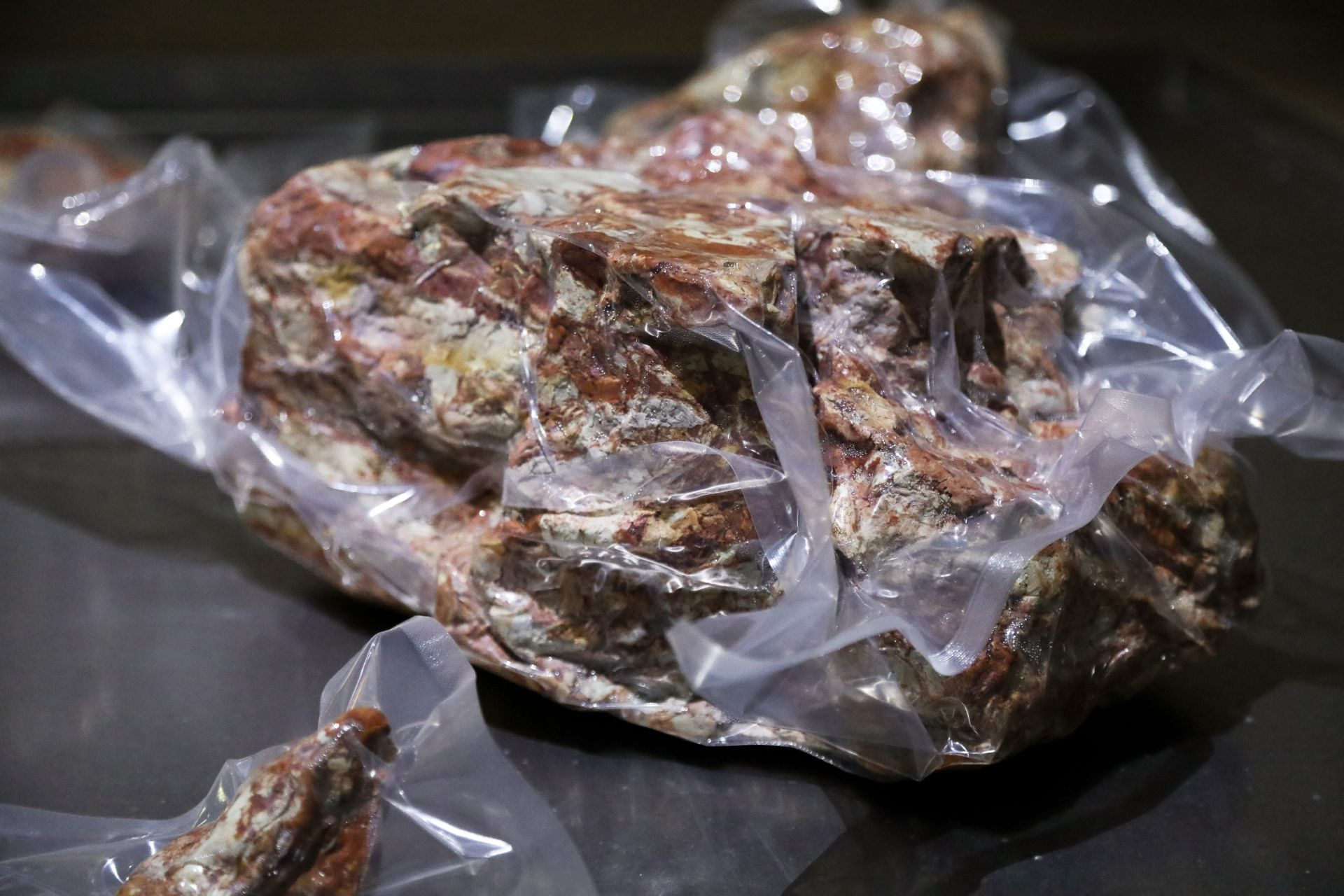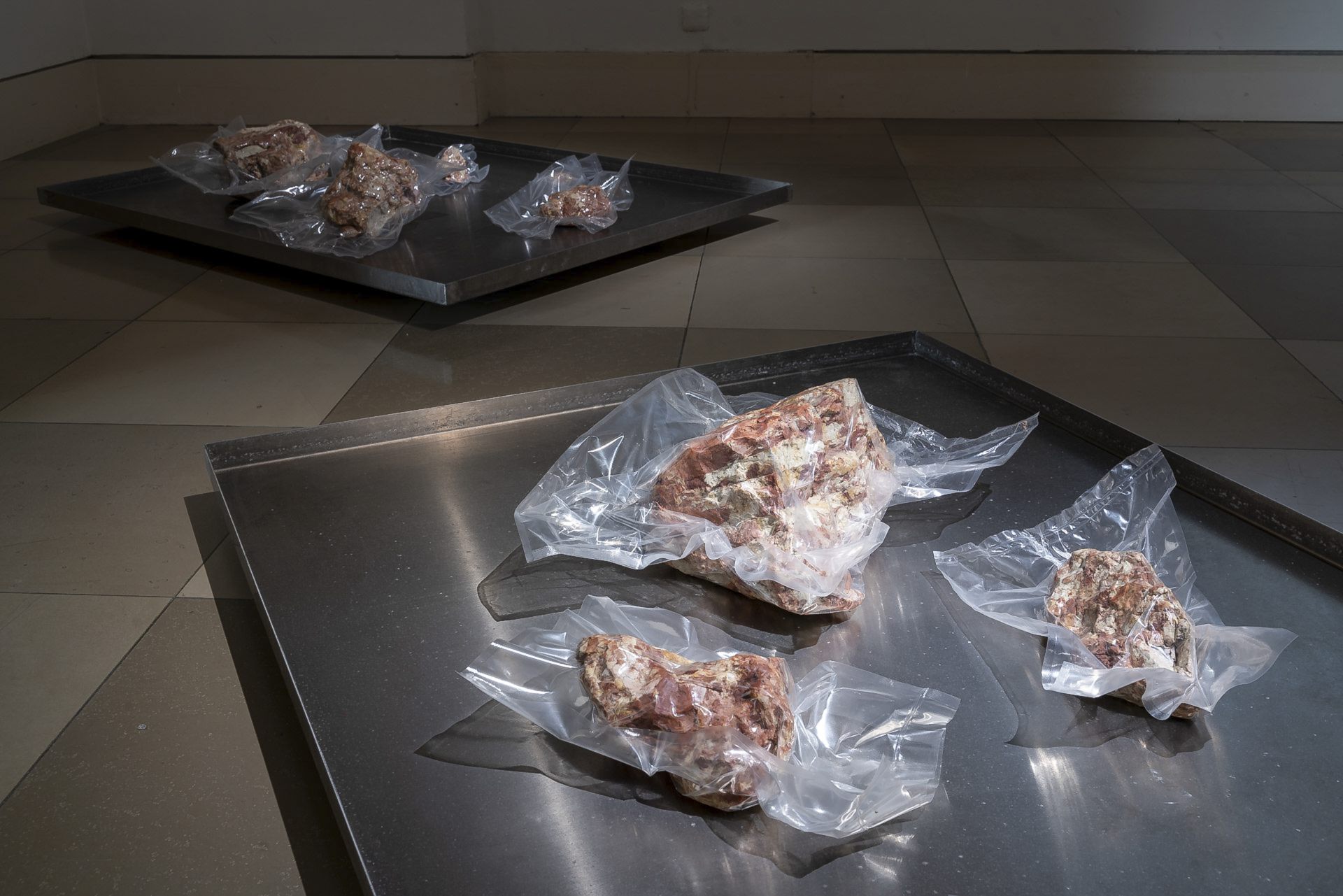Meaty-looking chunks of pit clay are vacuumed in plastic bags and presented on shiny metal platforms in the exhibition space. The clay was extracted from the ground in the Westerwald in 2015 and used there for the installation Erdzeit. It is estimated to be 30 million years old, can be assigned to the Tertiary period and is no longer available today. The recycled clay is preserved in its original moist state by the modern plastic skin.
From the Series Clay Studies:
In Clay Studies, Simone Kessler has concentrated entirely on the material clay, aiming to create something temporary, something that lives and continues to develop. The starting point for her series of works was her piece Boden, a 50-square-meter room with a smooth floor made of earth-moist clay. The artist had brought 3.5 tons of raw material by trailer from a Hessian clay pit to the exhibition space and spread it out on the floor in painstaking manual labor until a flat surface was created. In the exhibition, the clay surface could be viewed but not walked on. Kessler was primarily concerned with the spatial effect of the material and the confrontation with its transformation process. After the exhibition, she tore the work down: crushed to powder and mixed with water, the clay became a mass with homogeneous color and new suppleness again. It serves as a raw material for subsequent works. The objects created from the recycled clay are once again entirely dedicated to the material and its processes of change. The unpreservable state of the material is an important subject in the series Clay Studies.



